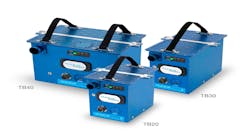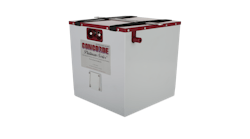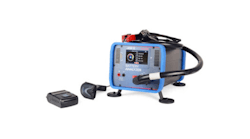True Blue Power Awarded FAA’s Highest Level of Lithium Battery Approval, Receives Sweeping Certification of Three Main Ship Batteries
True Blue Power announced the TSO certification of the company’s entire Gen5 main ship battery family. The TB20 (20 amp-hour), TB30 (30 amp-hour) and TB40 (40 amp-hour) received an impressive C179b CLASS A-4B rating, meeting the Federal Aviation Administration’s (FAA) latest and highest level of lithium battery requirements.
“We commend the FAA on continuously evaluating and improving the standards by which lithium products are determined safe,” said Brett Williams, True Blue Power director of engineering. “The latest certification requirements were significant and challenging, but equally important,” Williams continued. “The certification of all three Gen5 batteries at the same time, to such rigorous requirements, is uncommon and a great accomplishment.”
Maintenance-free / On-condition and Ultra-lightweight Advantages:
Engineered to address the many challenges lead-acid and Nickel Cadmium (NiCad) technologies present, the True Blue Power Gen5 family eliminates expensive battery maintenance, frequent capacity checks, low-voltage operational delays and most battery-related AOG situations. The TB20/30/40’s software-based Battery Management System (BMS) is certified to RTCA DO-178C, Design Assurance Level A. The sophisticated BMS provides constant monitoring, protection and real-time capacity data, enabling on-condition maintenance. The ultra-lightweight lithium-ion Gen5 batteries weigh up to 60% less and deliver more amp hours per pound than any other aircraft battery. This translates into more power for engine starts, more energy for emergency and back-up power, ultra-fast recharge and much longer life. Additional benefits include:
· Real-time monitoring
Communicates real-time state-of-charge (SOC) and state-of-health (SOH) data
· Built-in Test (BIT) Indicator
Provides SOC data without the need for external test equipment, load banks or auxiliary power
· Battery configurations programmed for each specific aircraft
Charge current limit, end-of-life capacity, minimum dispatch capacity and engine-start readiness
· Environmentally friendly
Significantly reduces carbon emissions, eliminates toxic metals and acid spills, and can be recycled or disposed of in area landfills





